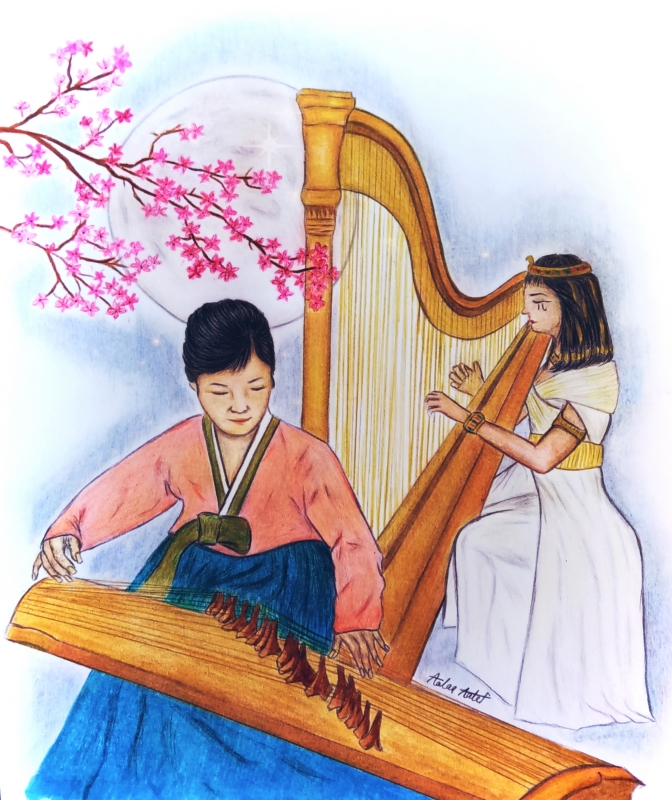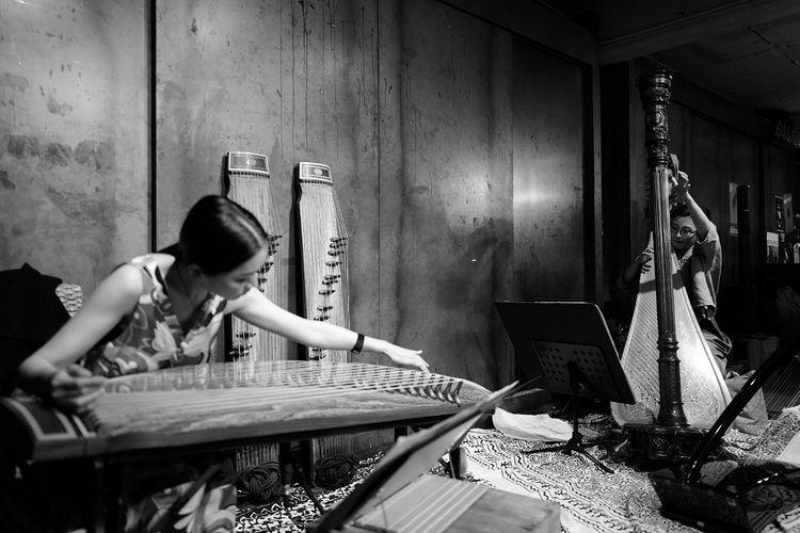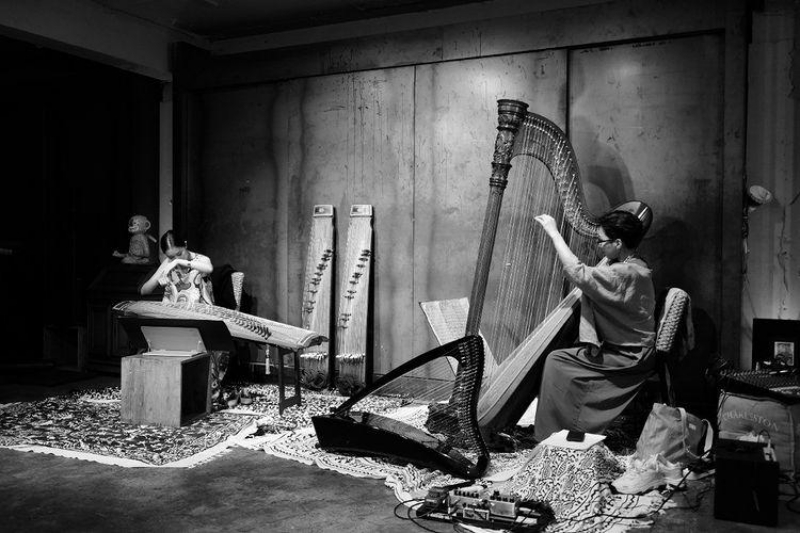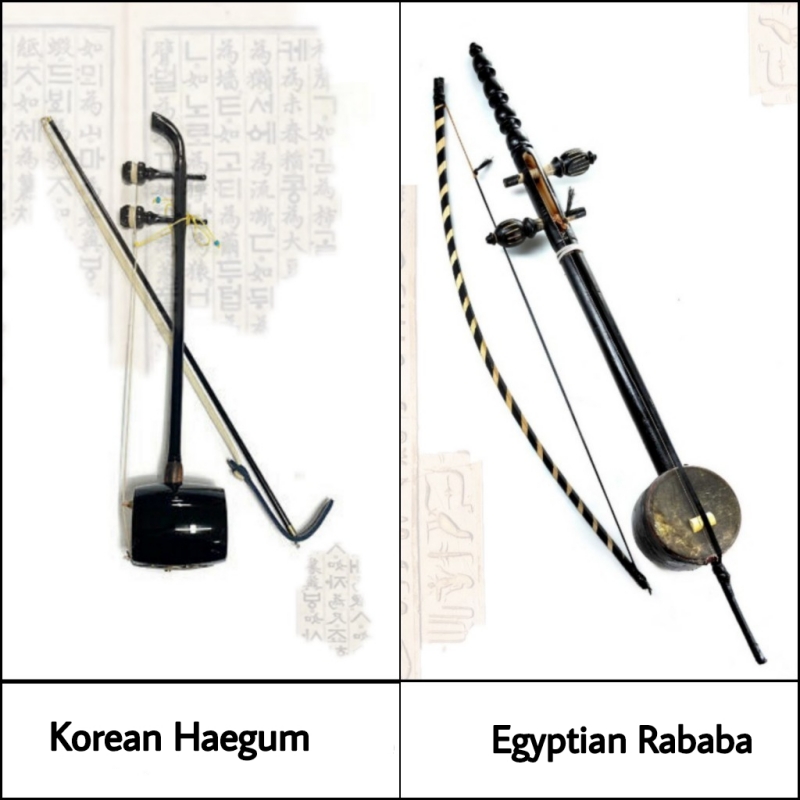- 한국어
- English
- 日本語
- 中文
- العربية
- Español
- Français
- Deutsch
- Pусский
- Tiếng Việt
- Indonesian
By Honorary Reporter Alaa Atef Ebada from Egypt
Photos and illustrations = Kihwa, Alaa Atef Ebada
I was 9 when I first heard the gayageum (Korean zither) in the song "O Nara" from the historical K-drama "Jewel in the Palace." While I couldn't understand a word of the lyrics, the uniqueness of the melody amazed me and made me feel an Asian charm.
Perhaps the secret is not only in the music but also in harmony among musical heritage worldwide. The gayageum's sound is similar to that of the Western harp, which is descended from an ancient Egyptian string instrument. The harp is one of the oldest stringed instruments in world history based on inscriptions on Egyptian temples and records of the even older Sumerian civilization.

The author's drawing "Under the Moon Light" depicts an imaginary scene of a duet between a harp and a gayageum.
A legend says the ancient Egyptians were inspired by a single-string war bow when they noticed that its sound came after the taut string was loosened. Harp music was predominantly used in worship rituals at temples, funerals, war rallies and celebrations.
On the Korean Peninsula, the gayageum was part of the music of court halls, ceremonies, rituals, and commemorative, religious and social celebrations. The ancient Gaya Confederacy is where the name gayageum, which literally means "Gaya instrument," comes from. The harp has strings made of nylon or other materials that are organized, with each string having an absolute sound different from that of other strings, while the gayageum's strings rest horizontally on its wooden body. The harp has 47 strings while the gayageum traditionally has 12.
My dream of listening to the two instruments together came true after discovering the Korean music duo 1247, comprising harpist Lee Kihwa (better known as just Kihwa) and gayageum player Ju Bora, who goes by Jubora.

The music duo 1247 combines the traditional harp with Korea's most famous traditional instrument gayageum.
Lee said, "We started together about six months ago under the name '1247.' The name of the band refers to the number of gayageum strings (12) and that of the harp (47)."
"The gayageum is the Korean harp, so it's rare to see the two instruments played together. Initially, Jubora asked me to play together. When I listened to my musical improvisation on the harp in my video, I found that the two instruments harmonize and blend well, so we decided to form our band 1247. I think we get along very well."
On the video, Lee said, "Here, Jubora plays a 25-string gayageum similar to the harp string technique, which makes the two instruments mesh better."

Kihwa holds her first rehearsal with Jubora.
The cultural similarities between the musical instruments of Egypt and Korea don't stop at the harp and the gayageum. The Korean half-sister of the ancient Egyptian string instrument rababa is the haegeum, which has a bamboo neck and a wooden body.

The haegeum is similar in appearance to the rababa.
Inscriptions on Egyptian temples from millennia ago told of rababa players and stories of a wandering rababa poet roaming the streets. The haegeum is an integral part of madang nori (traditional Korean folk theater featuring puppets, mask dances and percussion) and though it has only two strings, its expressive vocal range is wide and varied in expressing emotions like sadness and humor.
Perhaps one day, the traditional music of both Korea and Egypt can be performed on the same stage using each country's centuries-old instruments and unique melodies.
kalhong617@korea.kr
*This article is written by a Korea.net Honorary Reporter. Our group of Honorary Reporters are from all around the world, and they share with Korea.net their love and passion for all things Korean.